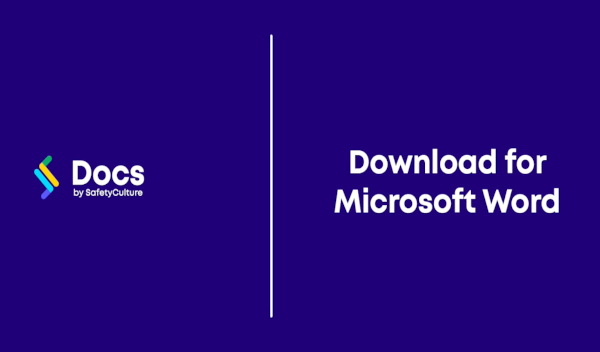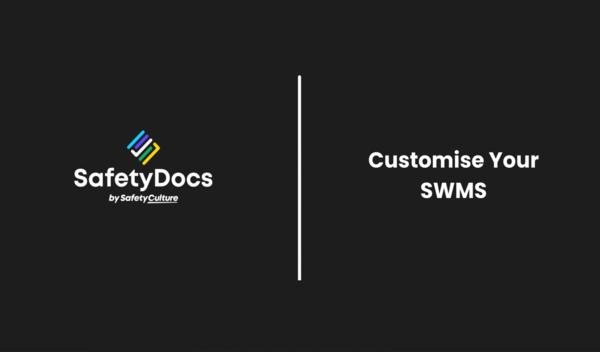Fire Detection-Alarms Testing Safe Work Method Statement
- Instant Document Delivery via Email.
- Add to your existing management system.
- Can assist in ensuring workers are adequately trained.
- Customisation instructions provided.
- Microsoft Word Format (Fully editable).
- Only pay once (no subscriptions required).
Fire Detection-Alarms Testing Safe Work Method Statement (SWMS)
This Fire Detection-Alarms Testing Safe Work Method Statement (SWMS) outlines guidelines for safely testing fire alarms. It covers necessary precautions and control measures to manage risks associated with high-risk construction work, including working at height, handling hazardous substances, and operating in potentially contaminated or flammable environments.
Job Steps Covered in Fire Detection-Alarms Testing SWMS
- Planning: Establishes the groundwork for safe operations, including system identification and isolation protocols.
- Client Consultation & Code of Conduct: Focuses on effective communication to mitigate risks associated with the task.
- Check Weather Conditions & Prepare: Addresses weather conditions and environmental considerations for outdoor work.
- Arrival On-site & Assess On-site Conditions: Involves initial site assessment and setting up for safety.
- Work Area Set-up: Details the establishment of safe zones and exclusion areas.
- Testing Procedures: Outlines the standards and checklists for thorough fire detection and alarm system testing.
- Pressure Testing: Covers safety measures for testing under pressure to prevent accidents.
- Working in Noisy Environments: Implements hearing protection and noise control strategies.
- Working Around Pinch Points: Identifies and mitigates risks of crush injuries and lacerations.
- Working in Dust/Fumes: Addresses protective measures against inhalation and skin exposure.
- Inspecting Battery Enclosures: Safe handling and maintenance within potentially hazardous environments.
- Housekeeping: Emphasises the importance of maintaining a clean and safe work area.
- Manual Tasks: Aims to prevent musculoskeletal disorders through proper handling techniques.
- Electrical Hazards: Highlights the need for qualified personnel and safety checks to avoid electrical risks.
- Working with Powered & Non-powered Tools: Correct tool usage and safety precautions.
- Working at Height on Ladders & Near Openings: Details fall prevention measures and safe ladder practices.
- Environment: Considers the environmental impact and implements control measures.
- On Completion: Wraps up the project with safety checks and site clearance.
- Emergency Response: Prepares workers for efficient and effective emergency handling.
Each purchase of our SWMS comes with a complimentary copy of the Legislation & Codes of Practice Reference List, valued at $19.95. This valuable resource provides an up-to-date overview of relevant laws and standards, further supporting your compliance efforts.
Key Features of the SWMS
- Comprehensive Risk Management: Outlines controls for a wide range of hazards, ensuring workplace safety.
- Regulatory Compliance: Adheres to Australian legislation, keeping your operations within legal standards.
- Customisable Document: Fully editable Microsoft Word format allows for easy adjustments to suit specific project needs.
- Emergency Response: Includes protocols for immediate and effective response to incidents, enhancing worker safety.
Who is it Suitable For?
This SWMS is essential for professionals involved in the testing and maintenance of fire detection and alarm systems, including:
- Safety Managers
- Electrical Technicians
- Fire Safety Inspectors
- Construction Site Supervisors
Purchase the Fire Detection-Alarms Testing SWMS now so your team follows best practices for safe and effective testing.
- Instant Document Delivery via Email.
- Add to your existing management system.
- Can assist in ensuring workers are adequately trained.
- Customisation instructions provided.
- Microsoft Word Format (Fully editable).
- Only pay once (no subscriptions required).
Fire Detection-Alarms Testing Safe Work Method Statement (SWMS)
This Fire Detection-Alarms Testing Safe Work Method Statement (SWMS) outlines guidelines for safely testing fire alarms. It covers necessary precautions and control measures to manage risks associated with high-risk construction work, including working at height, handling hazardous substances, and operating in potentially contaminated or flammable environments.
Job Steps Covered in Fire Detection-Alarms Testing SWMS
- Planning: Establishes the groundwork for safe operations, including system identification and isolation protocols.
- Client Consultation & Code of Conduct: Focuses on effective communication to mitigate risks associated with the task.
- Check Weather Conditions & Prepare: Addresses weather conditions and environmental considerations for outdoor work.
- Arrival On-site & Assess On-site Conditions: Involves initial site assessment and setting up for safety.
- Work Area Set-up: Details the establishment of safe zones and exclusion areas.
- Testing Procedures: Outlines the standards and checklists for thorough fire detection and alarm system testing.
- Pressure Testing: Covers safety measures for testing under pressure to prevent accidents.
- Working in Noisy Environments: Implements hearing protection and noise control strategies.
- Working Around Pinch Points: Identifies and mitigates risks of crush injuries and lacerations.
- Working in Dust/Fumes: Addresses protective measures against inhalation and skin exposure.
- Inspecting Battery Enclosures: Safe handling and maintenance within potentially hazardous environments.
- Housekeeping: Emphasises the importance of maintaining a clean and safe work area.
- Manual Tasks: Aims to prevent musculoskeletal disorders through proper handling techniques.
- Electrical Hazards: Highlights the need for qualified personnel and safety checks to avoid electrical risks.
- Working with Powered & Non-powered Tools: Correct tool usage and safety precautions.
- Working at Height on Ladders & Near Openings: Details fall prevention measures and safe ladder practices.
- Environment: Considers the environmental impact and implements control measures.
- On Completion: Wraps up the project with safety checks and site clearance.
- Emergency Response: Prepares workers for efficient and effective emergency handling.
Each purchase of our SWMS comes with a complimentary copy of the Legislation & Codes of Practice Reference List, valued at $19.95. This valuable resource provides an up-to-date overview of relevant laws and standards, further supporting your compliance efforts.
Key Features of the SWMS
- Comprehensive Risk Management: Outlines controls for a wide range of hazards, ensuring workplace safety.
- Regulatory Compliance: Adheres to Australian legislation, keeping your operations within legal standards.
- Customisable Document: Fully editable Microsoft Word format allows for easy adjustments to suit specific project needs.
- Emergency Response: Includes protocols for immediate and effective response to incidents, enhancing worker safety.
Who is it Suitable For?
This SWMS is essential for professionals involved in the testing and maintenance of fire detection and alarm systems, including:
- Safety Managers
- Electrical Technicians
- Fire Safety Inspectors
- Construction Site Supervisors
Purchase the Fire Detection-Alarms Testing SWMS now so your team follows best practices for safe and effective testing.


